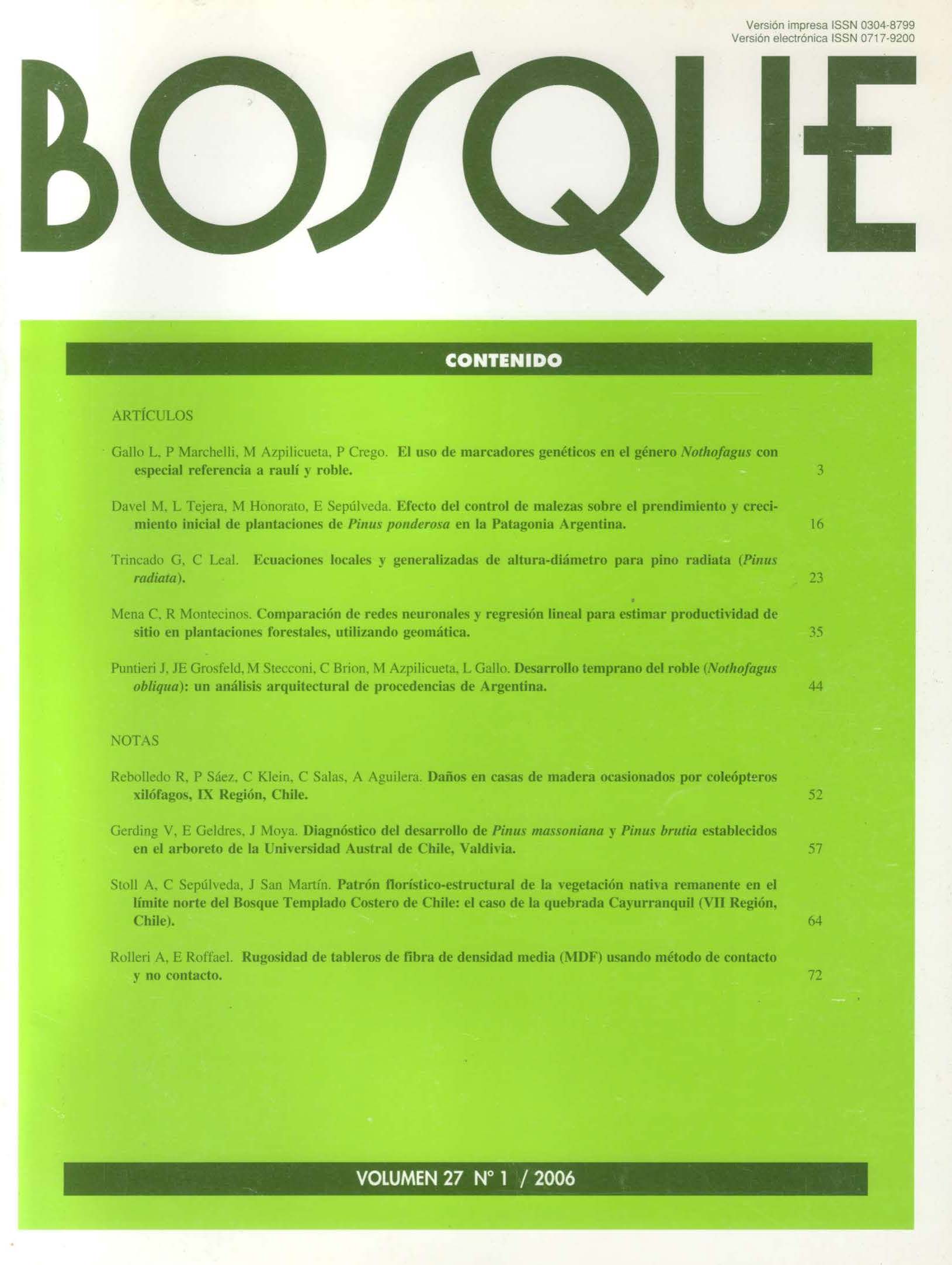Comparison of neural networks and linear regression to estimate site productivity in forest plantations, using geomatic
Main Article Content
Abstract
This research paper proposes a methodology to estimate site productivity in forest plantations by both linear regression models and artificial neural networks using some geomatic tools, such as Geographic Information System (GIS), Global Posicionating System (GPS) and Fotogrammetry. The study was carried out in the El Picazo Experimental Station which is located in the Andean premountain of the Maule Region. Independent variables are related to the distance to the water courses (DCA), terrain elevation model (MDE), geographic orientation model (MDO) and terrain slope model (MDP); the dependent variable was the total height of the 100 tallest trees per hectare (H_100). In all the estimation techniques applied the best selected variables were the terrain slope and the distance to the water courses. Moreover, the quality of the generated estimations (R2 = 41.65%) is within the range established in previous similar research works. The analysis of the results shows that the neural networks has smaller values for absolute mean error (EMA) and mean error quadratic root square (RMSE), than the linear regression model which has a smaller mean bias (SM) and is easier to integrate into a Geographic Information System. Finally, it is possible to establish that the site productivity based on some environmental variables like those indicated above allows to know useful information in order to develop forest plantation programs in bare zones.

